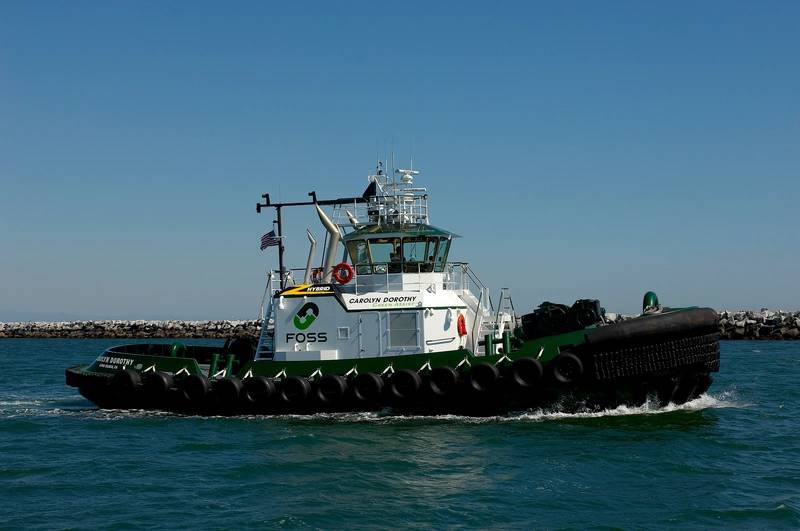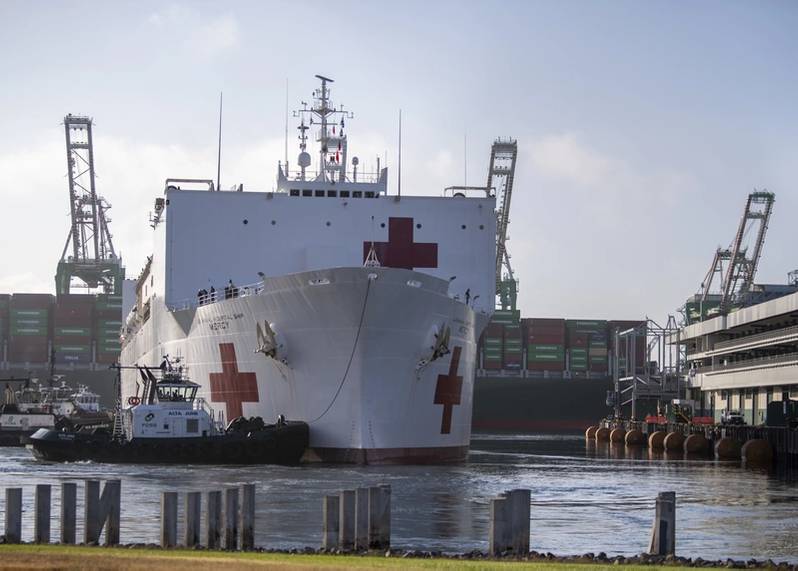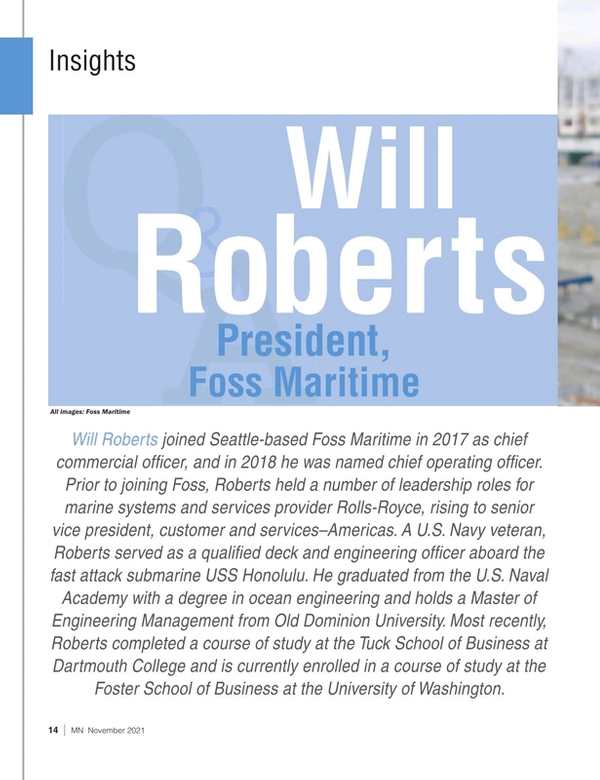
Interview: Will Roberts, President, Foss Maritime
Will Roberts joined Seattle-based Foss Maritime in 2017 as chief commercial officer, and in 2018 he was named chief operating officer. Prior to joining Foss, Roberts held a number of leadership roles for marine systems and services provider Rolls-Royce, rising to senior vice president, customer and services–Americas. A U.S. Navy veteran, Roberts served as a qualified deck and engineering officer aboard the fast attack submarine USS Honolulu. He graduated from the U.S. Naval Academy with a degree in ocean engineering and holds a Master of Engineering Management from Old Dominion University. Most recently, Roberts completed a course of study at the Tuck School of Business at Dartmouth College and is currently enrolled in a course of study at the Foster School of Business at the University of Washington.
Please give a ‘by the numbers’ overview of the Foss Maritime fleet and areas of operation.
Foss Maritime operates a diverse fleet of vessels that support offshore towing operations as well as inland harbor services. Foss operates on a global scale with local operations support on the U.S. West Coast, U.S. East Coast, Gulf of Mexico, Hawaii and Alaska. Our primary ports, in which we provide harbor services, are Southern California (L.A./Long Beach), Northern California (SF Bay), Oregon (Columbia/Snake River) and Washington (Puget Sound). The fleet consists of more than 75 vessels and barges, supported by over 300 professional mariners.
Do you plan to grow the fleet or perhaps replace aging assets?
Foss continually seeks opportunities to expand our fleet and operations. Currently, Foss is pursuing opportunities within the offshore wind sector as well as growing the business with our existing customer base. Fleet growth is best when it dovetails into our strategic planning. Fleet replacement is a must. Foss most recently placed three state-of-the-art ASD 90 Z-drive harbor assist/escort tugs into the California fleet. Foss is fully committed to upgrading our current fleet in support of reducing our carbon footprint as well as meeting the demands of our customers, who continue to grow in capacity.
 Foss recently placed three state-of-the-art ASD 90 Z-drive harbor assist/escort tugs into the California fleet. (Photo: Foss Maritime)
Foss recently placed three state-of-the-art ASD 90 Z-drive harbor assist/escort tugs into the California fleet. (Photo: Foss Maritime)
How has Foss been impacted by the current shipping and supply chain issues, and what is the company doing in response?
Foss is responding to the needs of our customers. The current supply chain crises has more to do with terminal space, trucks, chassis and warehouse workers than it has to do with the tugboats needed to dock ships. Our industry has plenty of capacity to dock the ships waiting to berth. Foss also has the additional ability and capacity to transit containers on barges (short sea shipping) between major port pinch points to secondary ports within a days’ sailing. While not economically feasible in the past, with container rates from Asia increasing exponentially from where they were just 18 months ago, the consumer urgency may drive our customers to seek such an alternative solution.
Please give an update on Foss’ autonomous harbor tug project. Why did the company decide to adopt this novel technology, and how do you see the risks and rewards?
While we are not working on a fully autonomous tug, the systems that Sea Machines are building allow our crews to use autonomous features to make their jobs safer. Our mariners are the key to our success, and we believe the Sea Machines products will help them carry out their day to day operations. Our work toward integrating the autonomous controls into our new 90-ton ASD tug Rachael Allen continues with our partners at Sea Machines, the U.S. Coast Guard and ABS. As a safety enhancement that incorporates new and novel technology, we are testing out a tool to support our crews, which comes from a system processing digital information to enhance safety of navigation. We are excited about the tools this system brings to our mariners in their service of our customers. We will work closely with regulatory agencies and third-party auditors to thoroughly vet the system as we continue to move toward full operational use of the SM300 on board.
 Foss’ new harbor tug Rachael Allen is equipped with high-tech Sea Machines systems that will help mariners perform their jobs safer and more efficiently. (Photo: Foss Maritime)
Foss’ new harbor tug Rachael Allen is equipped with high-tech Sea Machines systems that will help mariners perform their jobs safer and more efficiently. (Photo: Foss Maritime)
U.S. offshore wind is ramping up in a big way. What are Foss Maritime’s goals as a participant in the emerging sector? Where do you see best opportunities for your company, and what is it doing to capitalize?
Foss is thrilled that the offshore wind industry is coming to the shores of the United States. Since the Cape Wind project over a decade ago, Foss has worked to find solutions for proposed offshore wind projects. Vineyard Wind will be the first of such projects. And, as Vineyard Wind clears many development hurdles, we are excited to see the industry as a whole gaining momentum. As a comprehensive marine services provider, Foss excels in delivering safe, on-time, and on-budget marine transportation solutions. The U.S. offshore wind market offers new opportunities, and Foss intends to continue its track record of being a quality marine transportation and service provider.
Decarbonization is a hot topic in the maritime industry today. Is Foss Maritime currently looking at alternative fuels, electrification or other means to reduce the environmental footprint of its fleet? Please explain.
Foss has always been proud of its commitment to protecting the environment. Foss has been focused on decarbonization and pollution reduction for years. We are willing to take the risks to test out new technology such as when we built and operated the world’s first battery electric hybrid tug, the Carolyn Dorothy back in 2010. We then took it a step further and retrofitted a sister vessel, the Campbell Foss, to hybrid operation soon after. As a next step, recently, we put our class of EPA Tier IV 90-ton escort and assist vessels in to service in California and will continue to build with the cleanest technologies available for our operations. Foss continues actively looking into alternative technologies and fuels, like the biofuel trial we have underway this year with our tug Alta June in the San Francisco Bay area. Fortunately, all of these technologies are constantly evolving and becoming more available. And, we definitely plan to integrate these new technologies into our fleet as we reinvest in and continue
to improve our fleet.
 Foss Maritime built and operated the world’s first battery electric hybrid tug, the Carolyn Dorothy, in 2010. (Photo: Foss Maritime)
Foss Maritime built and operated the world’s first battery electric hybrid tug, the Carolyn Dorothy, in 2010. (Photo: Foss Maritime)
What were your top goals when you took over as Foss Maritime president in January, and how have they evolved (if at all)?
I am both proud and humbled to be president of one the premier towing companies with a worldwide reputation. Sadly, my top goal when I became president was to put Foss into the best position possible during the COVID pandemic. We focused on our employees and their families while still operating safely to support our customers and communities. We had great success in continuing operations, and now we can focus on our core business and our future business.
What have been your greatest challenges this year, and how did you tackle them?
The greatest challenge, as you might expect, was the evolution of COVID. You can only tackle this challenge if you have a family that cares about each other and our customers. I am proud of how much our team support their shipmates, our customers and communities.
 Foss tugs assisted the USNS Mercy (T-AH 19) when the hospital ship arrived and departed Los Angeles for COVID-19 relief efforts in 2020. (Photo: Ryan M. Breeden / U.S. Navy)
Foss tugs assisted the USNS Mercy (T-AH 19) when the hospital ship arrived and departed Los Angeles for COVID-19 relief efforts in 2020. (Photo: Ryan M. Breeden / U.S. Navy)
Read Interview: Will Roberts, President, Foss Maritime in Pdf, Flash or Html5 edition of November 2021 Marine News
Other stories from November 2021 issue
Content
- Interview: Will Roberts, President, Foss Maritime page: 14
- Feds Struggle to Address Supply Chain Capacity Issues page: 20
- Maritime for the Win(d) page: 23
- Maritime Cybersecurity: Prepare, Detect and Respond page: 30
- Inland Waterways: A Crucible of Issues page: 34
- Leading the Charge page: 42
- Marine News' Top Boats of 2021 page: 50


